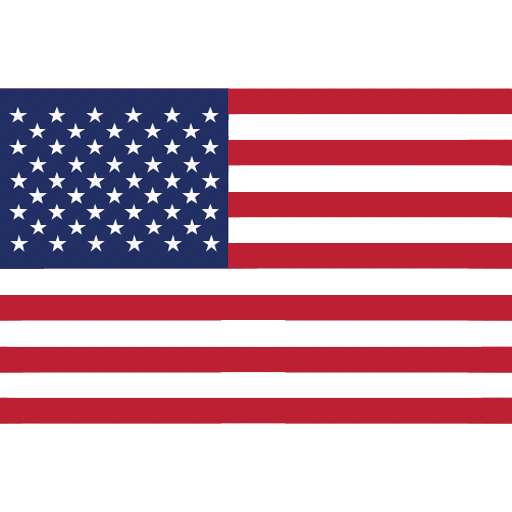Understanding Pet Product Common Failures: Safety and Compliance Insights
Assembling safety and quality in all toys and hardgoods
First published: October 2025
The pet product industry has experienced significant growth in recent years, driven by an increasing number of pet owners who regard their pets as part of the family. Despite this growth common and preventable failures continue to pose risks. Many trace back to design, material selection, supplier controls and insufficient validation of real-world use. Implementing a structured test program, robust production controls, and independent verification not only reduces hazards and recall risk but also builds retailer confidence and brand preference that comes a heightened responsibility to ensure the safety and reliability of pet products.
This article explains the most common reasons for pet product failures, the relevant regulations and standards, and how testing and certification can play a crucial role in addressing these concerns.
Regulations and related standards for pet product safety
There is no single, horizontal regulation devoted solely to pet products (except pet food and medicated products). In practice, most pet products are treated as consumer products and must be safe under each market’s general product safety framework.
Depending on the product’s features and use (e.g. electrical power, radio/Bluetooth, chemical treatments, batteries, textiles), additional sector-specific laws apply. Voluntary standards are frequently used to demonstrate conformity, even when not written specifically for “pet” products.
Following are the regulations related to pet product safety by region:
European Union
- General safety: The General Product Safety Regulation (EU) 2023/988 (GPSR), applicable since 13 December 2024, requires that consumer products placed on the EU market are safe and traceable.
- Chemicals: REACH Annex XVII restrictions and the POPs Regulation (EU) 2019/1021) can apply to pet products.
- Treated/biocidal products: Biocidal Products Regulation (EU) 528/2012 applies to biocidal products and treated articles (e.g. flea/tick collars, antimicrobial finishes).
- Electrical/radio: Low Voltage Directive 2014/35/EU, EMC Directive 2014/30/EU, and Radio Equipment Directive 2014/53/EU as applicable; RoHS 2011/65/EU and WEEE 2012/19/EU for most pet electronics; Batteries Regulation (EU) 2023/1542 for products with batteries; packaging rules may also apply.
United States
- General safety: The CPSC enforces requirements under the Consumer Product Safety Act (CPSA) and Federal Hazardous Substances Act (FHSA). There is no federal pet-toy standard, but products must not present unreasonable risk and must be properly labelled if hazardous.
- Electrical/radio: Evaluation to applicable UL/IEC standards by an NRTL is widely expected; FCC Part 15 applies to radio emitting devices. Reese’s law applies to products containing button/coin cell batteries.
- Pesticides/biocides: The EPA regulates flea/tick collars, spot-ons, and similar products under FIFRA.
- Chemicals: State-level laws can apply (e.g. California Proposition 65 warnings, and certain state restrictions on chemicals in consumer products).
United Kingdom
- General safety: The General Product Safety Regulations 2005 (SI 2005/1803), as amended by EU Exit legislation, govern consumer product safety.
- Chemicals: UK REACH applies to substances and articles.
- Electrical/radio/EMC: Electrical Equipment (Safety) Regulations 2016, Radio Equipment Regulations 2017, and EMC Regulations 2016; UK RoHS and UK WEEE where applicable; UK battery and packaging rules also apply.
Common reasons for pet product failures
Pet product failures often stem from materials, design or production variation, especially when foreseeable use is not fully validated. Our experts have summarised the most common reasons for product failures in pet products:
Design flaws and foreseeable misuse
Detachable small parts, long cords and strings, sharp edges, pinch points, and inadequate enclosures are classic risks. Designs that fail to account for breed strength, chewing or biting forces, or real-world loads (stairs, vehicle braking, sudden lunges) can pass on paper but fail in use.
Chemical and substance non-compliance
Excessive heavy metals in fittings, chromium VI in leather, azo dyes in textiles, PAHs in rubber, SCCPs in plastics, and non-compliant phthalates or organotin compounds are recurring findings. Even when not classified as “toys”, pet articles are often subject to REACH and other restrictions.
Locking, closure, and containment failures
Zippers that creep open, buckles that slip, carabiners that unclip under torsion, and kennel or carrier latches that spring open can lead to escapes and injuries. These mechanisms require endurance, vibration, shock, and abuse testing beyond simple function checks.
Electrical and battery safety in “smart” pet products and aquatics
Heaters, pumps, feeders, fountains, trackers, and LED collars add electrical, thermal, ingress, and battery hazards. Common failures include overheating, inadequate insulation, poor creepage/clearance, water ingress causing short circuits, charger faults, and coin-cell accessibility.
Labelling, warnings, and instructions
Missing size or weight limits, unclear assembly instructions, lack of maintenance guidance, and unsubstantiated performance claims are frequent deficiencies. Wrong or missing traceability information (model, batch, responsible economic operator) can also trigger enforcement under GPSR.
Manufacturing variation and supplier control
A design that passes type testing can still fail in production when materials vary, subcontractors substitute components, or stitching and heat treatment parameters drift.
Environmental and ageing resistance
UV, humidity, saliva, washing, and corrosion degrade materials faster than anticipated. Rubber hardens, plastics craze, coatings blister, and metal corrodes, turning initially compliant designs into hazards if ageing is not validated.
Fit, ergonomics, and animal welfare
Ill-fitting garments or harnesses can cause chafing or restrict breathing. Beds with inadequate ventilation or entrapment points may pose suffocation risks. Sizing conventions that do not align with breed morphology can make a compliant product unsafe in practice.
Documentation and technical file gaps
In the EU and UK, missing risk assessments, bills of material, test reports, or recall/traceability procedures themselves constitute non-compliance, even if the item appears safe.
Common failures by product category
Pet toys
Bite and chew resistance; small parts and sharp edges; tensile and seam strength; migration of heavy metals and PAHs; colourfastness to saliva and sweat; resistance to cleaning and ageing cycles.
Garments and harnesses
Strap and seam tensile strength; buckle slippage; hardware corrosion; azo dyes, and chromium VI content; fit and pressure mapping; laundering durability.
Carriers and bags
Static and dynamic load; handle and strap tensile strength; zipper and latch endurance; ventilation and CO₂ build-up; puncture resistance; tipping stability; vehicle restraint strength.
Carriages and strollers
Structural integrity, brake performance, wheel retention, stability, and dynamic fatigue; entrapment and sharp edges; rain cover ventilation.
Electrical aquatics and smart devices
IEC/UL electrical safety; thermal and ingress (IP) protection; battery and charger safety; insulation and earthing; cord strain relief; water compatibility.
How testing and independent verification marks ensure safety and competitiveness
Design-in safety with a risk assessment
Start with a structured hazard analysis covering mechanical, chemical, electrical, thermal, battery, and foreseeable use. Use this to define a test plan early.
Build a product-specific test programme
Combine applicable standards with pet-use simulations:
- Mechanical: Tensile, tear and seam strength; buckle slippage; handle and strap load; dynamic fatigue; small parts; sharp edges.
- Chemical: REACH-relevant screens (lead, cadmium, chromium VI, azo dyes, PAHs, SCCPs, phthalates where applicable), saliva/sweat migration, corrosion.
- Environmental/ageing: UV, humidity, laundering, saliva/sweat, salt fog for hardware.
- Electrical: IEC/UL safety, IP ratings, thermal, charger and battery safety, abnormal operation.
- Usability/welfare: Fit, ventilation, entrapment checks, clear warnings and limits.
Validate production, not just prototypes
Require supplier production part approval (PPAP) or first-article approval, define critical-to-safety characteristics (CTS), set in-line and pre-shipment acceptance quality limits (AQL), and enforce change control for any material or hardware substitutions.
Document compliance under GPSR and CPSC expectations
Maintain a technical file including risk assessments, material declarations, accredited test reports, labelling, traceability plans, and post-market surveillance procedures.
Earn an independent verification mark
Working with an accredited third party to obtain a voluntary safety mark:
- Confirms conformity via impartial testing.
- Signals due diligence to regulators (EU GPSR requires demonstrable safety and traceability).
- Increases buyer and retailer acceptance, with many large retailers fast-tracking products carrying recognised marks.
- Differentiates products on shelf and online, with QR-linked certificates providing transparent proof at point of sale.
- Reduces recall probability and insurance premiums through validated controls.
How can Eurofins Softlines & Hardlines help?
We go beyond compliance to help pet brands build trust and stand out in a competitive market. Our Pet Product Verification Mark gives manufacturers an independent stamp of approval that demonstrates safety, quality, and durability to retailers and consumers alike.
With accredited laboratories across China, Southeast Asia, North America, and Europe, we provide end-to-end testing and certification for a wide range of products, including leashes, harnesses, blankets, carriers, food containers, garments, toys, and more.
By working with us, you can:
- Reduce recall risk through impartial, accredited testing.
- Strengthen retailer confidence with recognised verification.
- Differentiate your products on shelf and online with a trusted safety mark.
- Prove your claims with transparent, QR-linked certification.
Take the next step in protecting pets, reassuring buyers, and growing your brand with confidence.
Contact us today or visit our Pet Product Testing and Verification page for more information.
























































